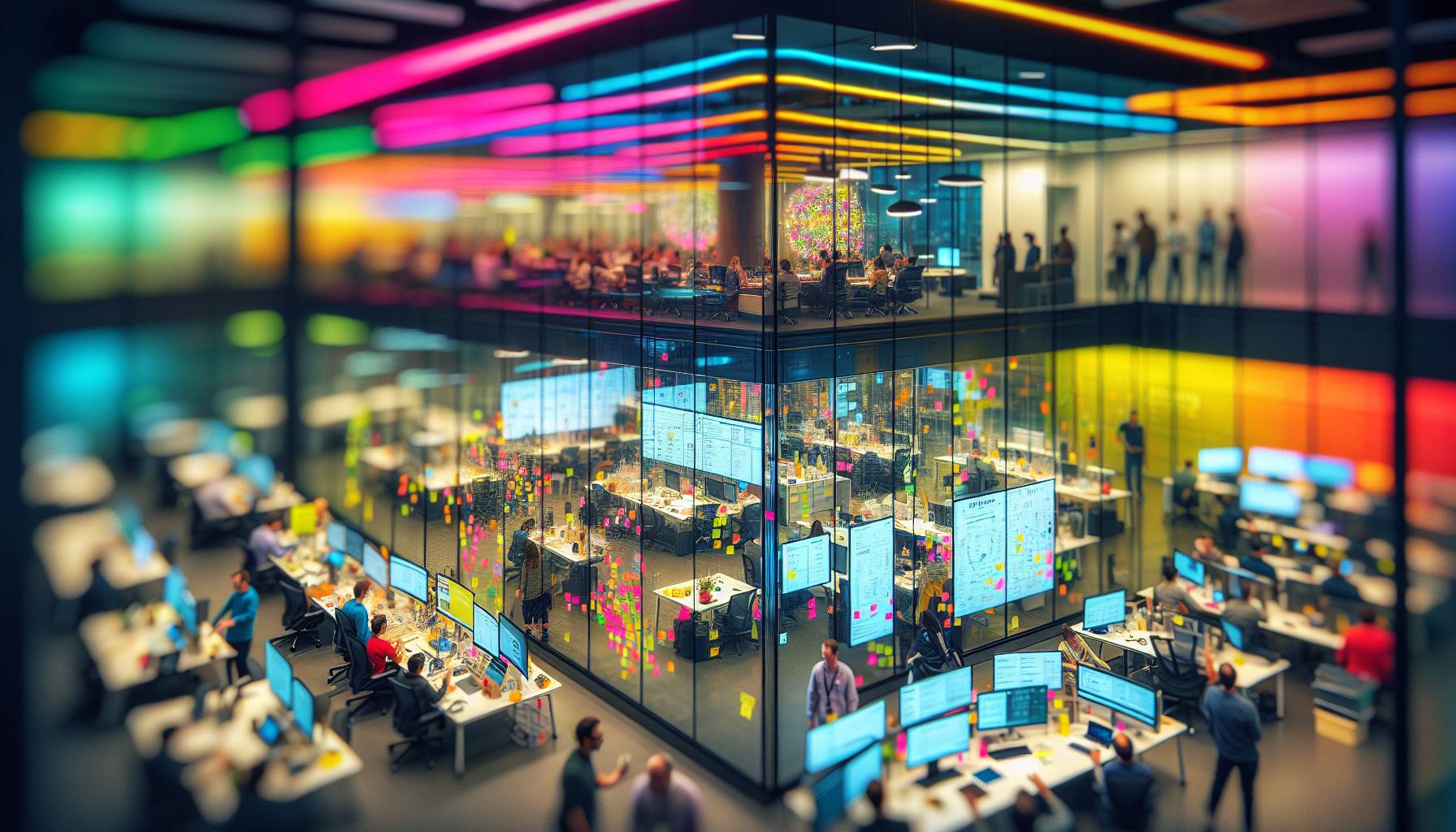Understanding Future-Proof Frameworks

Have you ever wondered what exactly is a future-proof framework. See, I think in the world of fashion, where trends swirl with dizzying velocity, we find ourselves seeking a sense of permanence - something that can stand the test of time and weather any storm. The future is generally uncertain, but a solid framework can keep you steady as she goes. For individuals and institutions alike, it’s crucial to build something that will adapt - not just to survive but to thrive in a world that’s in constant flux.
The heart of a sturdy framework is pretty much quite simple: know what your values are. Without those guiding lights, it’s all too easy to lose yourself trying to catch up with every short-lived trend out there. Now, this doesn’t mean closing your eyes to the future.
It means understanding where the horizon lies and how you plan to move towards it. You’ll need firm foundations - built on your experiences, history, knowledge and strengths.
To prepare for anything that comes your way, you’ll want to stay curious about change. That means keeping up with new information that may help you get ready for tomorrow. A future-proof framework will always have space for creative thinking and flexibility. Design thinking can be valuable here - identifying problems as they arise, coming up with ideas on how to solve them and experimenting until you find what works best for you or your organisation.
Engaging the right people at every step also ensures better results since they offer different perspectives. There isn’t a blueprint you can always follow perfectly when building things for tomorrow because no one can say exactly what it holds. But if curiosity fuels your journey, resilience keeps your spirits high and firm values guide you along the way; then there’s little reason to worry about what may come next.
Step 1: Assessing Current Needs and Trends

What exactly does “future-proofing” even mean when you’re surrounded by everything being turned upside down. Most of us can agree that it feels like there’s been more change in the past few years than the ten before combined. People have changed, the way they work has shifted, and the way they perceive themselves and others doesn’t seem to fit old expectations anymore.
I Assume It appears that people’s needs and behaviour are evolving faster than anyone can keep track. It may be safe to say that we’re at a stage where things are shifting more rapidly than ever before. How do we, as people working with other people, make sure we’ve got a handle on how fast things are typically moving.
I think the answer lies in two core things: humility and flexibility. While the rate of change may be unprecedented, change itself isn’t new. As a global collective, most of us are almost never trying to pivot and shift in ways that don’t just serve ourselves but each other as well.
Maybe this includes taking on new behaviours that create bigger inclusivity or perhaps it means moving away from ‘traditional’ ways of working altogether. As our current needs adjust and new trends emerge, it is important to remember that adaptability isn’t just about trying new things - it is often about reassessing whether what you’re doing right now is working for you at all.
Step 2: Selecting the Right Tools and Technologies

Implies That how do you make sense of the sheer volume of tools on offer these days, and more importantly, how do you pick the right ones. To be honest, sometimes you don’t. Sometimes you get it wrong and then suddenly that app that was ‘free’ is sort of now $75 a month - but no one can remember why we signed up.
Or who did the onboarding. Or if anyone ever even used it. Technology has to help and not hinder. It’s meant to streamline, not add time-consuming complexity and yet so often it does.
It’s great when it works. It’s the best feeling when tech means team collaboration is seamless - people are communicating better, things are getting done faster, everyone seems happy, HR have had less complaints about Karen’s “incessant” messaging after midnight about her dog’s birthday or the team meeting changing because someone ate too many raw beans and didn’t have enough time in the bathroom before work and now they need to go home because no one can stay in the office with them. Technology that helps us do our jobs is great and finding what works for your business is key. It seems like the best way to choose is comparatively to look at what it does to help you achieve your goals - what could your team use.
What would make their lives easier. What features would be helpful. Is it easy for everyone to use. And will Karen still be able to message incessantly at midnight about her dog’s birthday.
The way we work now has changed so much since covid turned everything upside down so being open-minded about tech can really help your business become future-fit. There are so many apps these days that businesses can use to increase productivity and creativity so taking advantage of them is an important part of a future-proofed business. It seems like we know the world is changing and becoming more digitally dependent every day so making sure your business stays competitive by implementing new technologies will give you an edge over competitors who are lagging behind.
Step 3: Building a Flexible Architecture

Have you ever found yourself wondering how things can still work, even when the entire foundation appears to have been shaken to its core. Well, maybe not quite as dramatic - but it does seem a little reminiscent of The Three Little Pigs. More or less. And you must’ve been inspired by their choices for how best to build your own future-proof framework.
When it comes to ensuring that your digital system survives threats and challenges (both known and unknown) - even in the face of significant and rapid evolution in the landscape, you might like to take a leaf out of the third little pig’s book and construct a flexible architecture out of bricks instead of straw or wood. It’s no longer enough to “set and forget”. Your current digital landscape should be evaluated to ensure it meets industry standards - because if not, you’ll probably lose out on significant competitive advantage.
Along with industry standards, setting basic requirements based on your current performance and use cases, while also looking ahead to predict future needs is an integral part of building a flexible architecture. You’ll also want to consider what a worst-case scenario might look like for your digital system. Whether it’s a server crash, data leak, or even just something as simple as a customer being unable to access their account due to a forgotten password - are you equipped with flexible architecture built on bricks that doesn’t crumble at the slightest sign of trouble.
Building with flexibility in mind means making sure that your system can be easily modified as needs change. You never know when an emergency will strike, or when you’ll need to scale up or down. Flexible architectures are built by using design frameworks that allow you to swap components in and out without having to disrupt the whole system.
This could mean using modular plug-and-play systems, drag-and-drop features, or even custom-built dashboards - whatever works best for your unique requirements and use cases.
Step 4: Implementing Agile Practices

Ever wondered what it would be like to get up in the morning and feel excited about going to work. Well, I think if people were truly honest with themselves, they would say it isn’t an everyday thing but you can definitely up those numbers by creating an environment where employees feel comfortable and supported. Agile practices are a major element that makes a difference in workplace culture. The agile methodology is basically an iterative approach that aims to support teams in producing high-quality work more efficiently and quickly.
It involves collaborative work so you have to rely on open communication and sharing ideas. This is usually associated with software development but has now started to become popular across several industries. A healthy, supportive workplace that recognises each member’s abilities and ensures everyone feels included is essential for employees to thrive. Agile practices are extremely important for future-proofing frameworks as they make certain your business continues to grow at the pace set by the industry.
When you work in an environment where everyone collaborates, you automatically become more flexible. More or less. The culture becomes one where you can learn from others and create something better together.
It also helps the company maintain a positive image as someone who cares for their employees and is open to adopting new things when needed. When these things come together, you’ll see that your workforce feels empowered and satisfied in a way where they want to come into work. Agile practices might seem like a lot but when done correctly, they bring everyone together so all these things happen naturally.
It’s more of a team effort rather than just management dictating how things should be done or how employees should behave.
Step 5: Continuous Learning and Adaptation

Does it ever feel like you’re finally up to speed, and then suddenly everything changes. That’s the reality of today’s world. Knowledge is everywhere - it’s multiplying faster than any of us can keep up with.
In a business sense, this means you’ve got to have systems that allow for consistent learning, adaptation, and ideally - improvement. We’re talking about company cultures that thrive on continuous learning. Most businesses have some sort of system for staff development.
But there’s a huge difference between training and continuous learning. Having a set plan where people know how to keep improving their skills is essential to keeping the business relevant as the world around us changes rapidly. Encouraging growth helps teams feel valued and motivated because there’s a clear understanding that they’re worth investing in - and so is their future. It might seem obvious - but if your team knows you care about their growth, they’ll want to help you grow too.
There are plenty of ways to foster a culture of continuous learning within your organisation. And even though the specifics will vary depending on the industry or size, most companies will be able to create training opportunities for employees at all levels. Some great ideas include knowledge-sharing sessions, mentoring programmes, collaborative projects or workshops, and giving teams access to educational resources. If you’re still not sure about the value of continuous learning, take it from Peter Senge who says: “the only sustainable competitive advantage is an organisation's ability to learn faster than the competition.
”.


